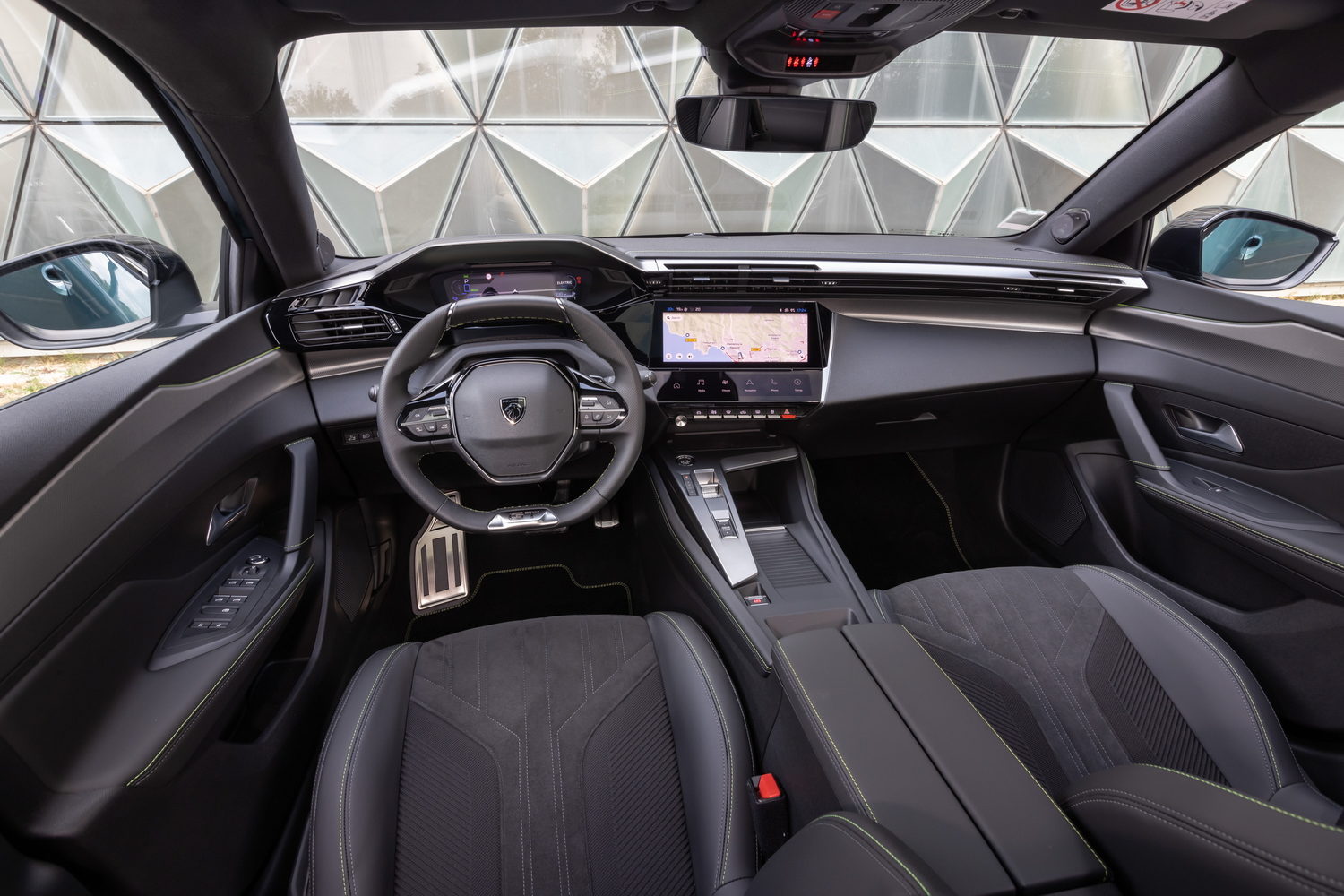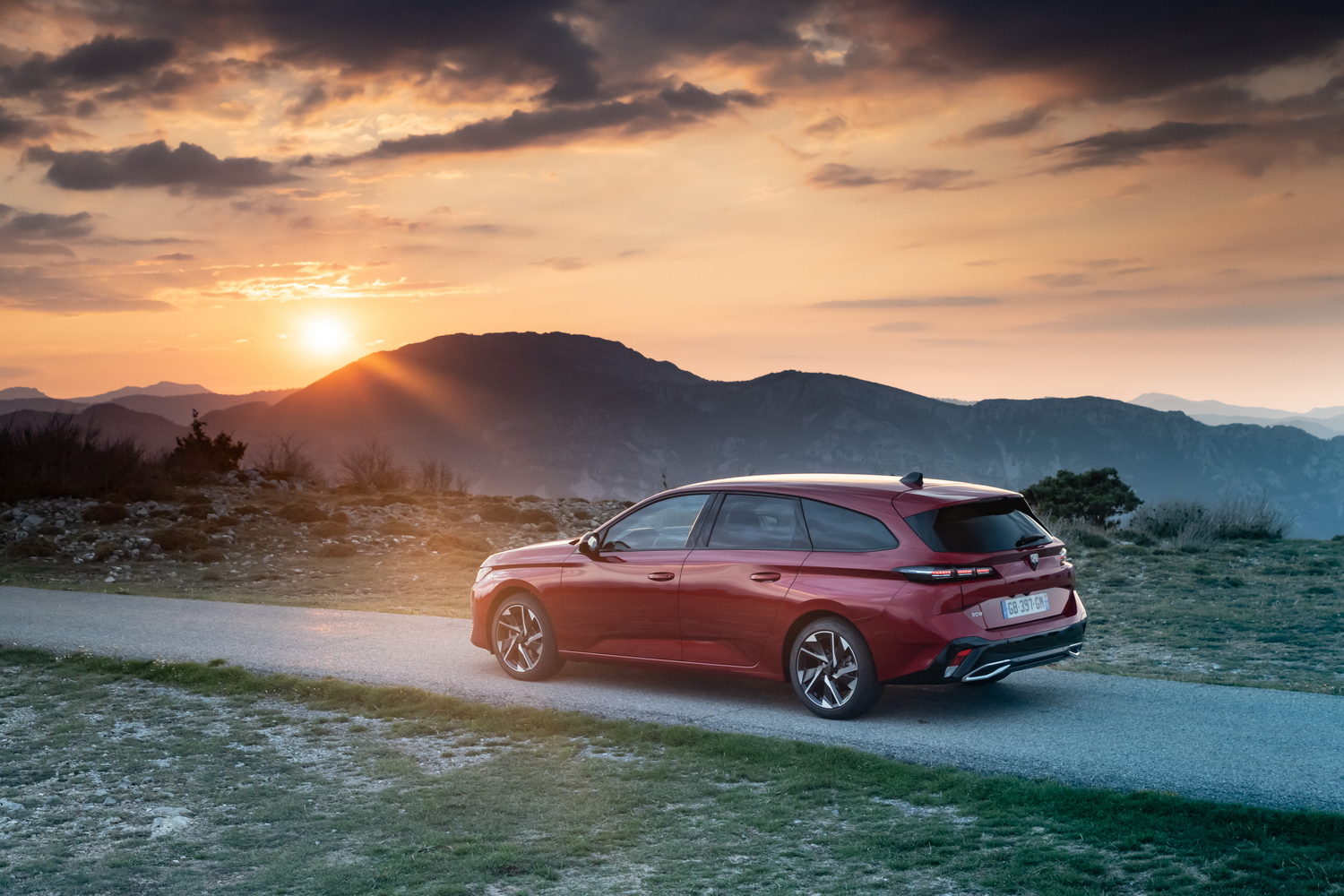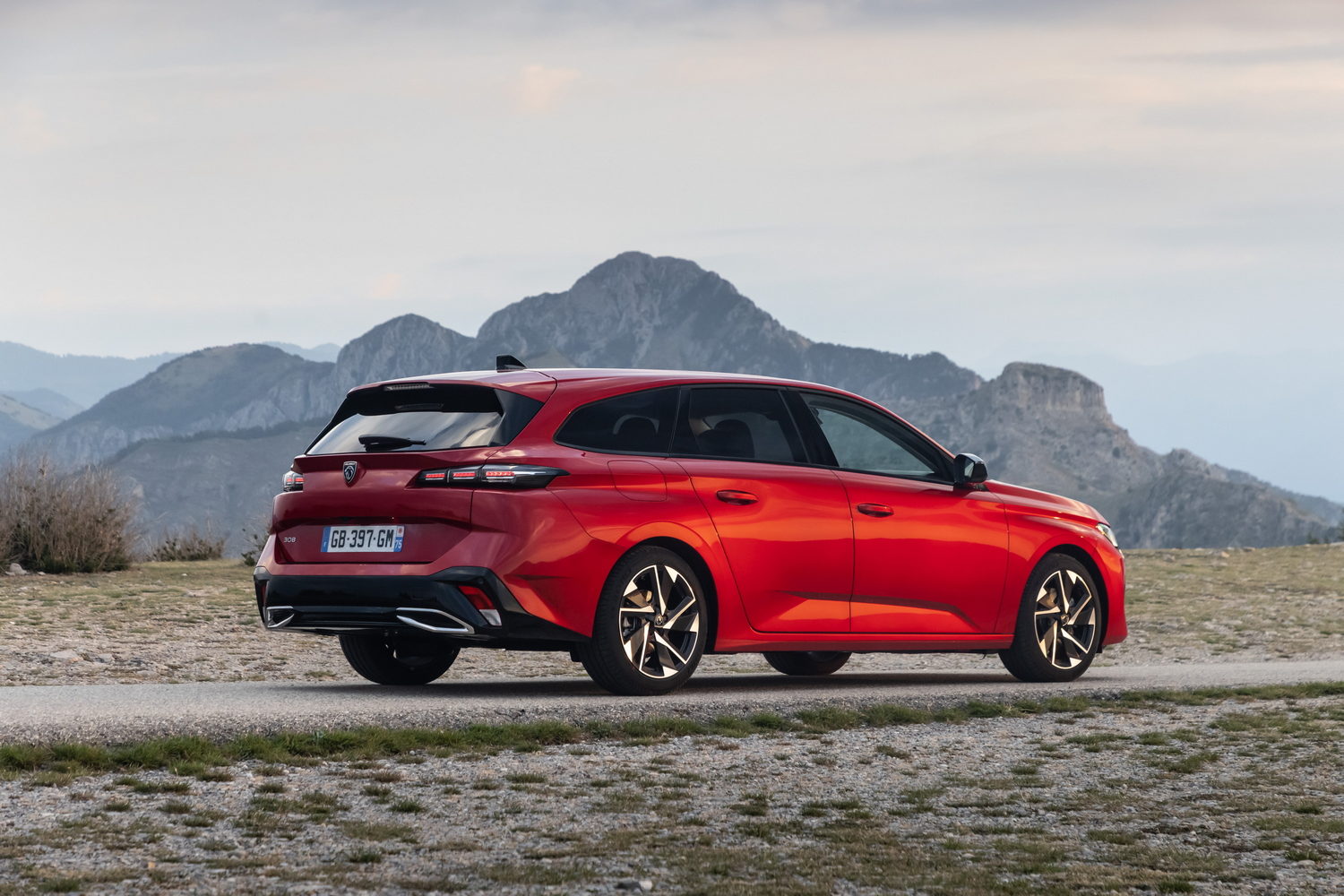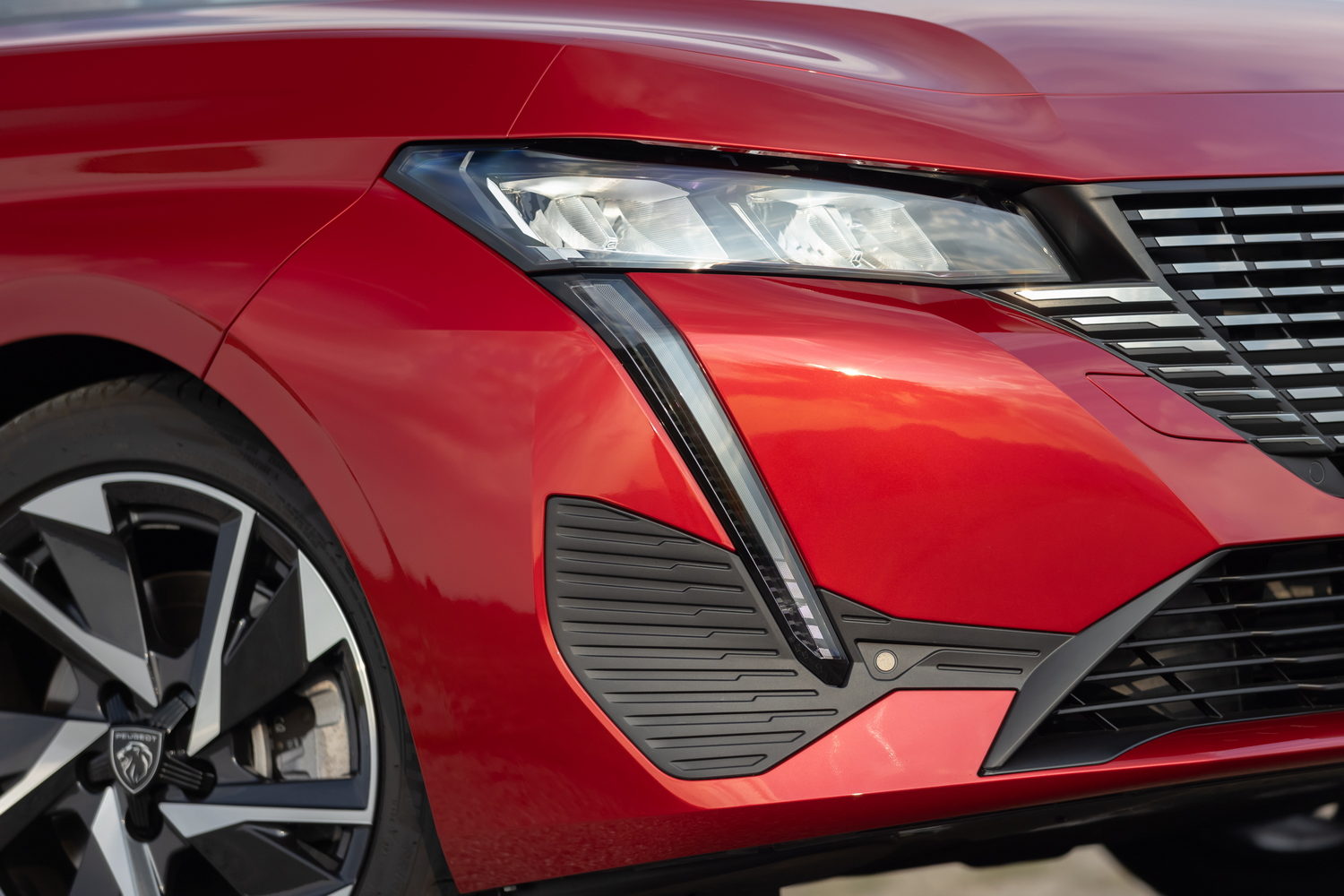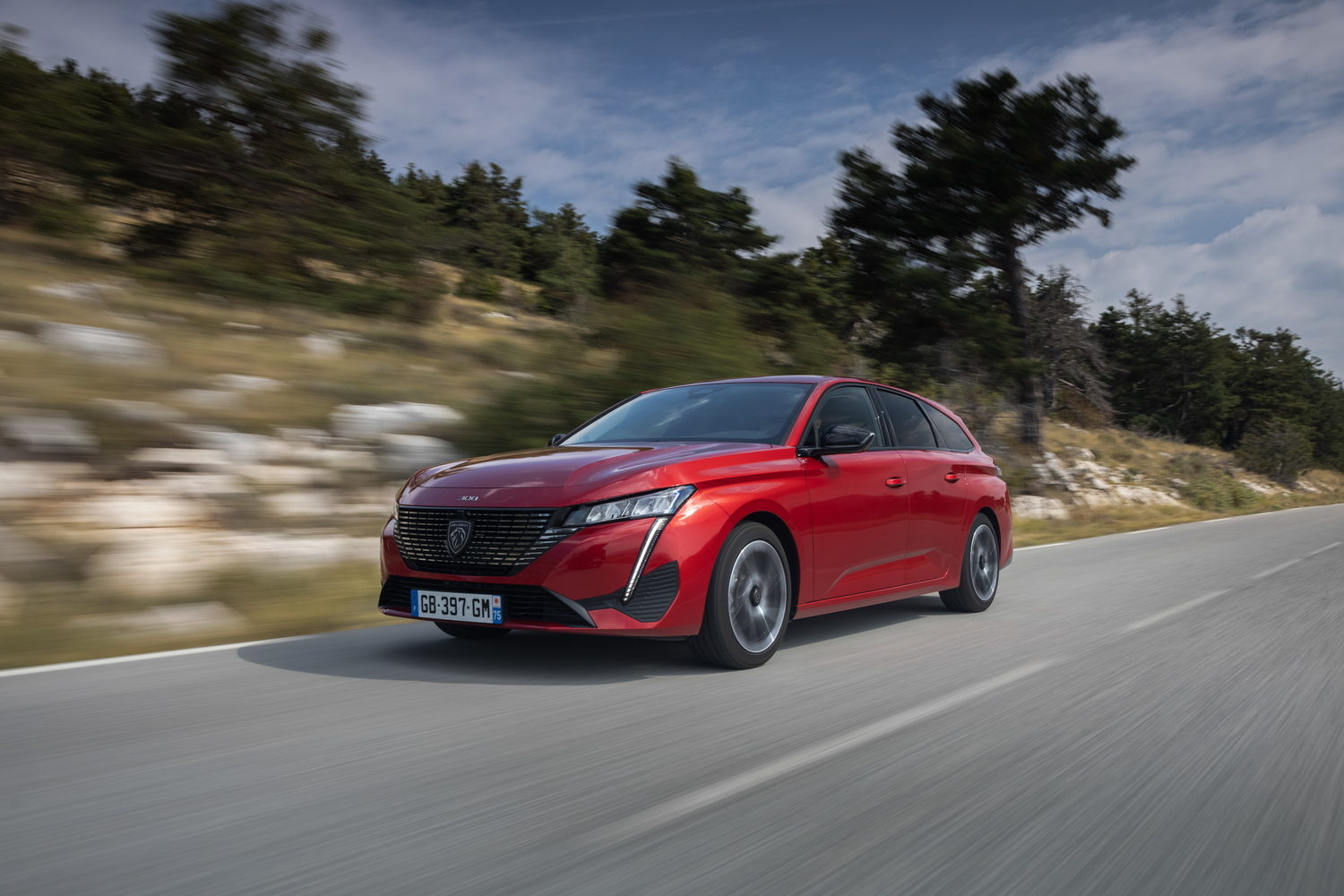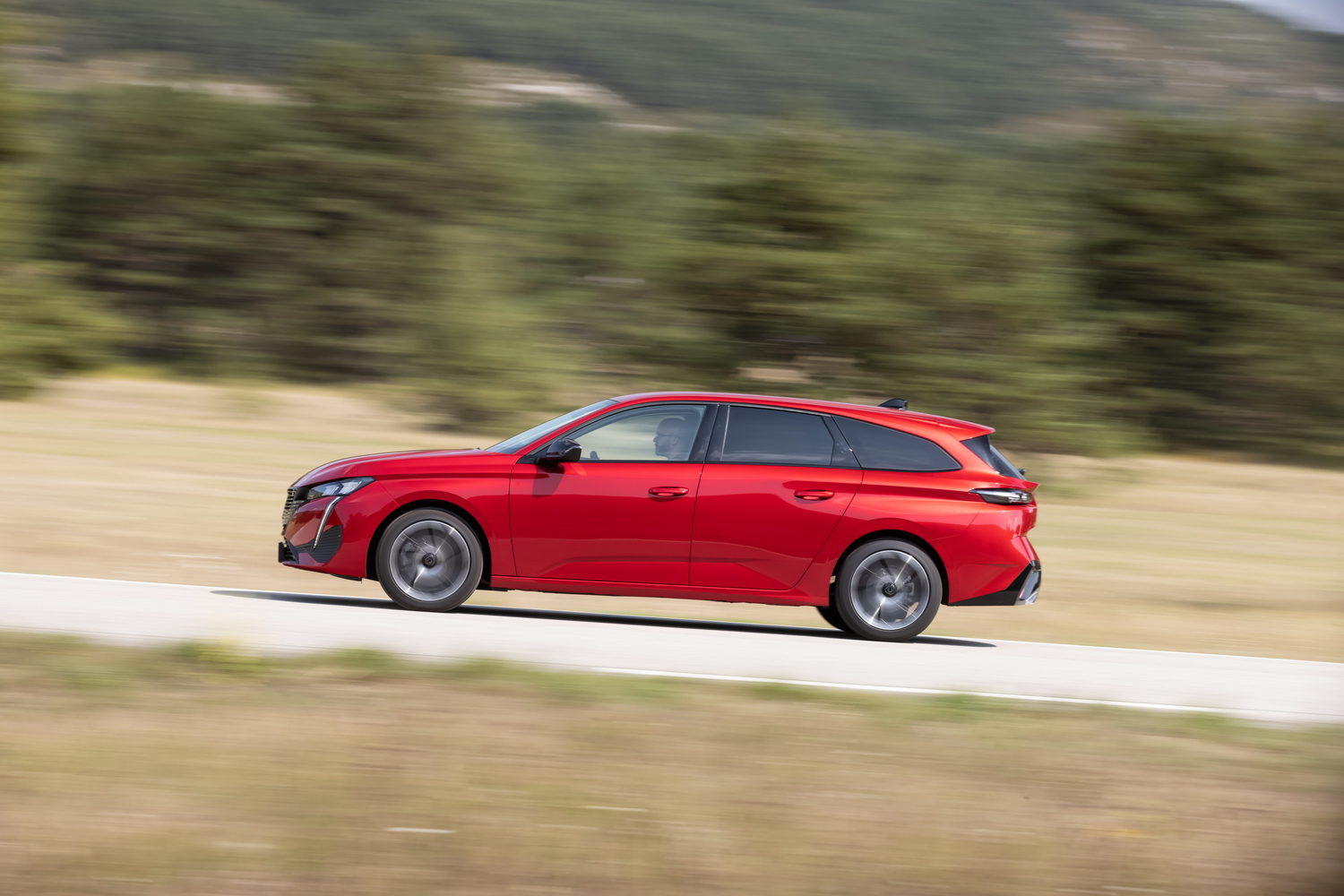Many car makers would have you believe that the humble estate car is a dying breed, but not Peugeot. The French brand believes that the new SW estate version of its sharply styled 308 will convince a fair proportion of consumers with its enlarged boot, but is there really no penalty for choosing a more commodious car? We tried a mid-range SW with the 1.2-litre PureTech 130 petrol engine to find out whether the estate should be given a second chance by Irish buyers.
In the metal
Like a racehorse or a rugby team, car makers' design departments seem to slide in and out of form. BMW is a prime example. After its ugly phase in the mid-2000s, the brand returned to form in the early 2010s, only for the dawn of the grilles to ruin everything in the late 2010s. Peugeot, though, is definitely firing on all cylinders at present, with the new 508 kick-starting a revolution that saw the 208, 2008 and 5008 all turn from ugly ducklings to elegant swans seemingly overnight.
Now it's the turn of the 308, and Peugeot has smacked it straight between the posts once again. Although the proportions aren't quite as perfect as those of the 508 fastback, the 308 is a striking proposition alongside the less inspiring Ford Focus and Volkswagen Golf. And the SW estate version of the 308 has done nothing to damage that image. In fact, the elongated back end merges well with the existing styling, and this is unquestionably one of the best-looking smallish estate cars on the market.
The interior is up there with the best in class, too, with a modern design and much-improved technology. As before, and as with other models in the Peugeot range, the French company has opted for a tiny steering wheel and high-set instruments in a bid to give the car a more go-kart-ish feel, but whether that suits will depend on the driver.
Whether you like the tiny wheel or not, it's here to stay, and as with the old 308, it adorns a relatively button-free dashboard. Peugeot has removed the majority of buttons from the cabin in search of cleaner design, and that means the 308 only really has a small selection of switches for items such as the hazard lights and window demister, plus the gear selector and driving mode toggles. Almost everything else has gone digital.
That means you get a massive central touchscreen and a digital instrument display as standard, with the former including a sub-screen below the main display. That screen is configurable and allows you to choose your own 'hot key' shortcuts for easier navigation of the main touchscreen. It sounds like a gimmick, and normally we'd be set against such a strange, seemingly unnecessary move. But oddly, it works well.
As does the screen itself. Peugeot claims it's as sharp as that of a smartphone, with similar response times and graphics, but we think that's pushing it. Modern phones are incredibly fast and intuitive, whereas the 308's touchscreen... isn't. Still, it's a vast improvement on the clunky old screens fitted to other Peugeot models, and the built-in navigation is a particularly impressive step forward. The only real issues are occasional moments of lag and some fiddly buttons, as well as some less-than-logical menus. Otherwise, it's incredibly good, and certainly a match for the modern systems from Volkswagen.
We could say the same of the cabin quality, too. Peugeot has quietly come on leaps and bounds in this department, and the 308's interior is up there with some of the best on the market. Admittedly, some of the dashboard plastics look a bit hard and shiny, but they're more forgiving than they look, and the way in which they have been screwed together is easily as good as anything from Ford or Opel.
Oddly, however, the new 308 SW fails to impress in the area once dominated by its predecessor. Although the new car is marginally longer than the old car, the boot is about 50 litres smaller with the rear seats upright. At 608 litres it's hardly tiny - you don't even get that much space in a BMW X3's boot - but it's about average for its direct rivals, rather than being streets ahead.
All the extra length, it seems, has been used improving rear legroom, but even that is not exceptional. It is, however, perfectly adequate for most passengers, and the extra headroom afforded by the raised roofline means taller back-seat passengers will be more comfortable in the SW than in the standard hatchback.
Driving it
Like the 308 hatchback, the 308 SW is offered with a choice of four different powertrains. There's a 130hp, 1.2-litre petrol option called the PureTech 130, a similarly powerful 1.5-litre diesel called the BlueHDi 130 and two plug-in hybrids offering a choice of 180hp or 225hp. All four come with an eight-speed automatic gearbox.
The official figures for the plug-in hybrid versions will certainly appeal. Peugeot reckons you can manage up to 60km on a single charge, and both will burn a tiny amount of unleaded on the official economy test. However, unless you can keep most of your journeys below the 60km mark and charge the car regularly, they won't be as efficient as the numbers suggest. For longer drives, the diesel will be more frugal, but we'd stick with the basic petrol engine fitted to our test car.
Although it's only a 1.2-litre, three-cylinder engine, it has more than enough grunt to heave the 308 around, and 6.0 litres/100km is not to be sniffed at. Add in the fact this car will accelerate from 0-100km/h in less than 10 seconds, and you've got a bit of a gem, considering it's the cheapest option in the range. The only gripe is the gearbox, which occasionally feels slow on the uptake when you're trying to pull away from a junction, but once you're on the move it's absolutely seamless.
That's in keeping with the overall driving experience, which seems geared for comfort over sportiness. The standard 308 hatchback rides very well, and though the SW feels a little less silky, it's still in the same league. It's also pretty refined, with the engine making truly little noise most of the time. When you can hear it, it sounds like more of a contented purr than an irritating drone.
As with the hatchback, the 308 SW is definitely not designed to be sporty, and the bigger back end makes its presence felt in the corners, creating a little more body lean and trying to drag the car off-line. That said, it's still relatively enjoyable, with the steering eliciting a keen response from the front wheels, even if it is a bit too light for our tastes.
Around town, though, the 308 SW's weaknesses become strengths. The light steering makes it easier to manoeuvre, and although rear visibility isn't brilliant, the inclusion of a reversing camera in mid-range models means parking isn't too much of a chore. The automatic gearbox also makes the 308 more relaxing in traffic.
What you get for your money
The Peugeot 308 SW starts at €32,765, which is exactly €1,000 more than the equivalent 308 hatchback. That's the case across most of the line-up, which mirrors that of the hatch. Active, Allure and GT trim levels are available and, along with the petrol engine tested here, there's a 1.5-litre diesel and two different plug-in hybrid options.
Even the basic 308 Active comes with alloy wheels, rear parking sensors and touchscreen infotainment system, as well as the digital instrument display. Automatic LED headlights and automatic windscreen wipers are expected to feature, too, along with 'keyless' push-button engine start, climate control and the Apple CarPlay and Android Auto smartphone integration systems.
Our mid-range Allure-specification test car added to that with a reversing camera, keyless entry and front parking sensors, as well as part-leatherette upholstery and a chrome grille. Meanwhile, the range-topping GT trim provides sportier styling, larger alloy wheels and sporty Alcantara interior trim.
Summary
Aside from a slight increase in list price there really are few downsides to choosing the Peugeot 308 SW. Not only does it offer almost 200 litres more boot space than the hatch with all five seats upright, but save for a very slightly firmer ride, it feels much the same to drive and there's little difference in fuel economy. If you don't need the space, the hatch remains the 308 of choice, but if you'll use the bigger boot, there's nothing here to put you off the SW model.
But the SW isn't just competing with the 308 hatchback. It also has to match some competent rivals, including the Ford Focus Estate and a host of other runners and riders, including the Kia Ceed Sportswagon and Skoda Octavia Combi. In such illustrious company, the 308 SW feels right at home, and there are now plenty of reasons to choose such a thing ahead of its rivals.


